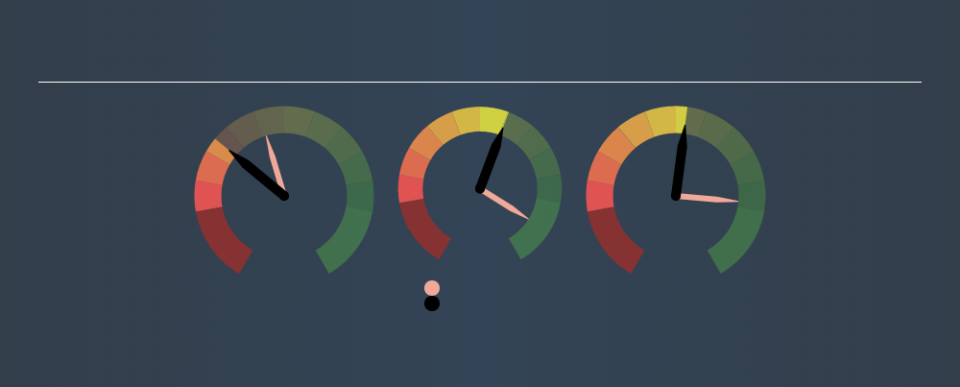Bayer CropScience Limited’s (NSE:BAYERCROP) Investment Returns Are Lagging Its Industry

Today we are going to look at Bayer CropScience Limited (NSE:BAYERCROP) to see whether it might be an attractive investment prospect. To be precise, we'll consider its Return On Capital Employed (ROCE), as that will inform our view of the quality of the business.
First of all, we'll work out how to calculate ROCE. Next, we'll compare it to others in its industry. Then we'll determine how its current liabilities are affecting its ROCE.
Return On Capital Employed (ROCE): What is it?
ROCE is a metric for evaluating how much pre-tax income (in percentage terms) a company earns on the capital invested in its business. All else being equal, a better business will have a higher ROCE. In brief, it is a useful tool, but it is not without drawbacks. Author Edwin Whiting says to be careful when comparing the ROCE of different businesses, since 'No two businesses are exactly alike.
How Do You Calculate Return On Capital Employed?
Analysts use this formula to calculate return on capital employed:
Return on Capital Employed = Earnings Before Interest and Tax (EBIT) ÷ (Total Assets - Current Liabilities)
Or for Bayer CropScience:
0.13 = ₹2.6b ÷ (₹29b - ₹9.0b) (Based on the trailing twelve months to June 2019.)
Therefore, Bayer CropScience has an ROCE of 13%.
See our latest analysis for Bayer CropScience
Does Bayer CropScience Have A Good ROCE?
One way to assess ROCE is to compare similar companies. Using our data, Bayer CropScience's ROCE appears to be significantly below the 17% average in the Chemicals industry. This performance could be negative if sustained, as it suggests the business may underperform its industry. Separate from how Bayer CropScience stacks up against its industry, its ROCE in absolute terms is mediocre; relative to the returns on government bonds. It is possible that there are more rewarding investments out there.
Bayer CropScience's current ROCE of 13% is lower than its ROCE in the past, which was 23%, 3 years ago. This makes us wonder if the business is facing new challenges. You can click on the image below to see (in greater detail) how Bayer CropScience's past growth compares to other companies.
Remember that this metric is backwards looking - it shows what has happened in the past, and does not accurately predict the future. ROCE can be misleading for companies in cyclical industries, with returns looking impressive during the boom times, but very weak during the busts. ROCE is only a point-in-time measure. Since the future is so important for investors, you should check out our free report on analyst forecasts for Bayer CropScience.
Do Bayer CropScience's Current Liabilities Skew Its ROCE?
Current liabilities are short term bills and invoices that need to be paid in 12 months or less. The ROCE equation subtracts current liabilities from capital employed, so a company with a lot of current liabilities appears to have less capital employed, and a higher ROCE than otherwise. To counter this, investors can check if a company has high current liabilities relative to total assets.
Bayer CropScience has total liabilities of ₹9.0b and total assets of ₹29b. As a result, its current liabilities are equal to approximately 31% of its total assets. Bayer CropScience's middling level of current liabilities have the effect of boosting its ROCE a bit.
The Bottom Line On Bayer CropScience's ROCE
Unfortunately, its ROCE is still uninspiring, and there are potentially more attractive prospects out there. You might be able to find a better investment than Bayer CropScience. If you want a selection of possible winners, check out this free list of interesting companies that trade on a P/E below 20 (but have proven they can grow earnings).
If you are like me, then you will not want to miss this free list of growing companies that insiders are buying.
We aim to bring you long-term focused research analysis driven by fundamental data. Note that our analysis may not factor in the latest price-sensitive company announcements or qualitative material.
If you spot an error that warrants correction, please contact the editor at editorial-team@simplywallst.com. This article by Simply Wall St is general in nature. It does not constitute a recommendation to buy or sell any stock, and does not take account of your objectives, or your financial situation. Simply Wall St has no position in the stocks mentioned. Thank you for reading.

